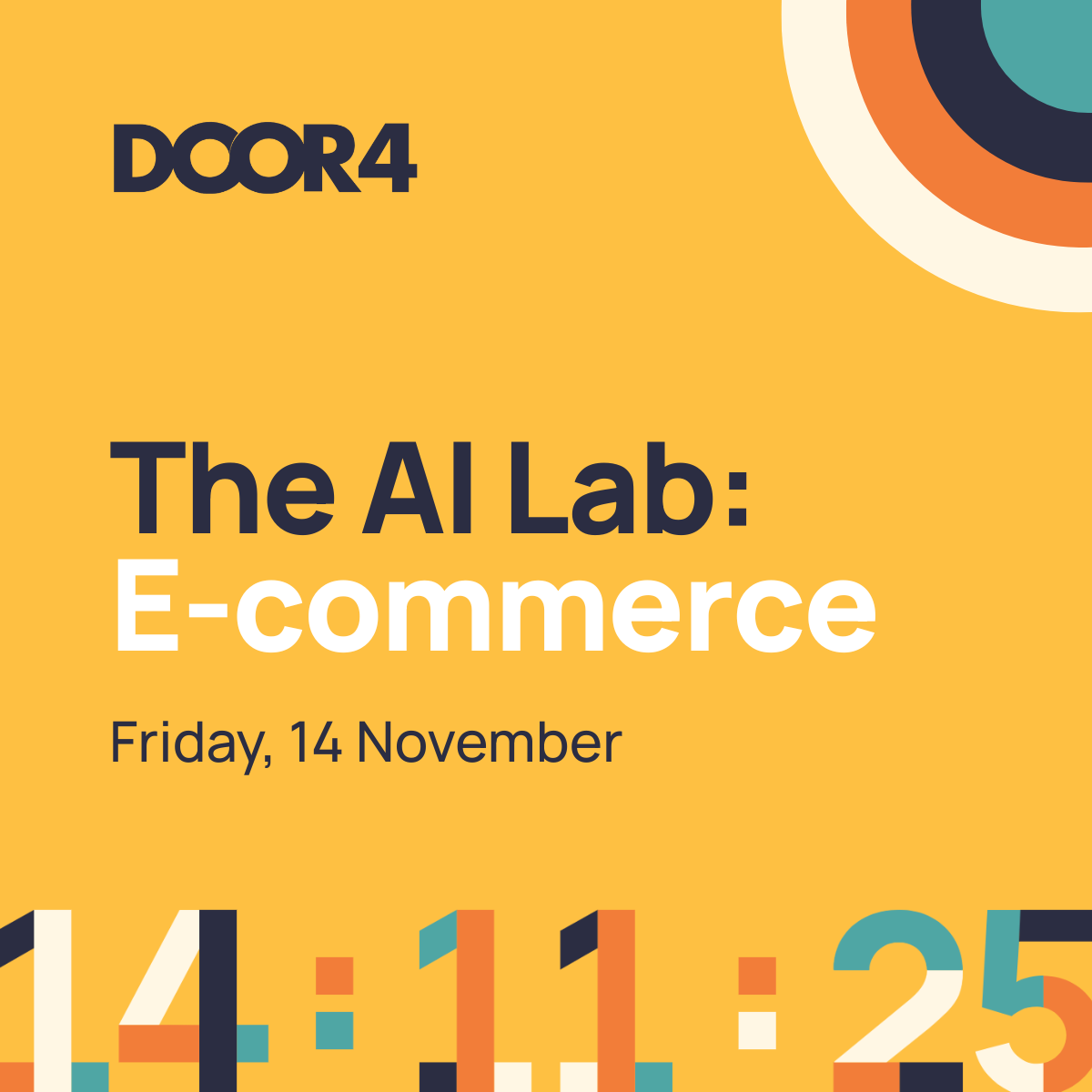Ready to explore the possibilities?
Request a quick call with our team to find out how the Innovation Explorer program can help your business take its next big leap into AI and automation.
What AI means for marketing teams now and in the future, from automation to brand building, and all the nuance in between.
AI’s quiet (and not-so-quiet) takeover of marketing ops
 AI is no longer something we can afford to keep at arm’s length. It’s threaded itself through every corner of marketing ops, from content drafting to performance analysis, at an alarming pace. But for all the promises of ‘efficiency’ and ‘personalisation,’ most leaders recognise one stubborn fact: machines can do a lot, but human creativity, judgement, and brand intuition still give you the real competitive edge.
AI is no longer something we can afford to keep at arm’s length. It’s threaded itself through every corner of marketing ops, from content drafting to performance analysis, at an alarming pace. But for all the promises of ‘efficiency’ and ‘personalisation,’ most leaders recognise one stubborn fact: machines can do a lot, but human creativity, judgement, and brand intuition still give you the real competitive edge.
Dan Södergren, AI Marketer at Great Marketing Works, puts it this way:
“AI is becoming the plumbing of marketing, yes — but it’s also becoming something much more… Data isn’t oil to be extracted; as we believed 10 years ago. It’s soil that can grow creativity. The danger is treating AI only as an efficiency hack. That’s the short-term game. The long-term win is using it to create living, adaptive systems that connect performance marketing with hyper personalised brand storytelling.”
AI doesn’t eclipse the human side of marketing, but it absolutely changes the game. The challenge, and the opportunity, is using AI as an enabler, not just a shortcut.
AI adoption in marketing ops: Where automation and people collide
Let’s get practical. Where is AI already at work inside modern marketing operations? The answer: nearly everywhere. Creative brainstorming, content drafts, social media reporting, campaign analysis – AI tools slot into the gaps, speeding up processes that once demanded repetitive manual labour.
Leon Calverley, Founder of Door4, points out, “We’re using [AI] across PPC, SEO and CRO to speed up testing, pull out insights, spot patterns faster, and tighten up targeting. But it’s not just about being more efficient. Used well, AI can help you understand your customers better—feeding into messaging, positioning, and helping build a stronger brand over time. The best teams aren’t just chasing quick wins; they’re using AI to make the foundations sharper too.”
Most teams are experimenting–dipping into tools here and there–but very few are properly integrating them into real workflows. That lack of structure is often the bottleneck: ad-hoc use brings some wins but rarely shifts performance at scale. To get beyond mere ‘AI as a plugin,’ Leon explains, “What we’re doing with clients is building structured, joined-up systems—like content calendars that reflect their people, their events, their own way of seeing the world. Then we use AI (alongside proper human input) to help deliver content consistently, on time, and in the right tone. … That’s when it starts to really deliver value.”
The short version? Automation works, but it doesn’t take away ownership. Instead, it sharpens the focus on strategy, freeing up human brains for what only they can do: connecting the dots, asking new questions, and weaving brands’ unique stories.
Connecting SEO, PPC & CRO with AI: smarter, not just faster
Traditionally, SEO, paid search (PPC), and conversion rate optimisation (CRO) existed in silos. Today, those walls are coming down, and AI is the hammer. Dan Södergren notes:
“SEO, PPC, and CRO are already converging under AI. Look at what Google is doing with AI Mode. Instead of silos, we now have feedback loops where every click, search, and test informs the next creative decision. … Marketers must think less like machine operators and more like gardeners or farmers — nurturing ecosystems, not running campaigns.”
Here’s what that looks like in practice:
- SEO insights from PPC tests now inform organic strategy, letting teams sidestep ‘guesswork’ when evaluating new keywords or landing pages.
- CRO specialists increasingly use AI to run rapid testing cycles, optimising user journeys in days, not weeks.
- Integrated data–not channel-based reporting–becomes the connective tissue. Every experiment, win or lose, adds to a feedback system that tunes performance across the funnel.
Ged Leigh, CMO at The Marketing Centre, shares a growing trend:
“Platforms are hard-wiring AI into audience discovery, creative iteration and measurement… YouTube appear to be pushing to reposition Demand Gen as full-funnel — a sign of the times. Digital video continues to prove it can do double duty—driving both immediate response and long-term memory effects when utilised properly.”
The upshot? The more these disciplines work together, the more each campaign benefits, not just from speed, but from shared intelligence and tangible learning, campaign-on-campaign.
The role of human creativity: can automation and imagination coexist?
For all the talk of efficiency and data, marketing’s heartbeat is still creative differentiation. Brands succeed not by shouting the loudest, but by connecting – emotionally and memorably – with actual people. Can AI help, or does it threaten to swamp everything in sameness?
Dan Södergren cautions, “Cultural capital still comes from human storytelling and a collective narrative. If everyone has access to the same AI tools, sameness is the real risk. … Brands that thrive will be those who use AI to free up time and energy for distinctiveness, imagination, and emotional resonance. AI scales, but humans still differentiate. The question for marketers in the future is HOW and WHY.”
Ged Leigh sees AI as a brake on ‘boring work’, accelerating better ideas: “The best use of AI is not to replace ideas; it’s to clear the decks — automating the mechanical or habitual … so teams spend more cycles on insight, narrative and distinctive assets. … The strategic case has hardened: in an AI-saturated market where bids and segments converge, distinctive memory structures become your compounding performance advantage.”
The most effective teams use AI and automation as a creative amplifier. Drafting, editing, and insight generation become battlegrounds for speed. But the ideas, tone of voice, and brand-specific nuance? That remains the uniquely human differentiator – one that’s now, arguably, more important than ever.

Challenges & pitfalls: the risk of ‘AI Slop’ and losing brand soul
The appeal of automation is obvious. But too much of a good thing has consequences. Over-relying on generic AI outputs risks flattening brand voice, eroding differentiation, and, at worst, damaging customer trust. Leon Calverley warns:
“One of the biggest issues we’re seeing is what people are calling ‘AI slop’ – content that feels generic, padded, and a bit empty. … Some businesses have gone from reviewing every word of copy… to just letting AI write everything, unchecked. That’s not progress. That’s just cutting corners, and people can tell.”
Another key risk is ‘brand drift’ – where automated outputs slowly drift from what actually makes a business unique. Stories of senior leaders reworking generic copy week after week highlight the real cost of unchecked automation.
Ged Leigh adds an operational lens: “Marketing AI is only as strong as the data spine underneath it; moving from fragmented IDs and inconsistent taxonomies to a unified, governed layer is the prerequisite for credible personalisation at scale … Most SMEs don’t manage data well and this will need to change dramatically if they are to realise the true value of AI.”
The answer? Bake your context, brand idiosyncrasies, and lived experience into every AI prompt, workflow, and output. Never leave strategy or brand safety to the bots alone.
Door4’s perspective: AI as the plumbing – but strategy is still the tap
At Door4, we see AI as the plumbing of modern marketing ops. It enables much smarter, faster workflows and delivers operational improvements that support serious business growth. But we’re adamant: tools only work when used with your team’s strategic intent – never as a replacement.
Door4 founder Leon Calverley describes the importance of connecting AI with real workflows: “We don’t stop at ideas and prompts. We connect it all: tone of voice, calendars, reviews, distribution… so it runs properly, not just when someone remembers to ‘use ChatGPT’.”
We increasingly see the highest ROI from AI-enabled experimentation in conversion rate optimisation. Why? Because that’s where AI turns insights into direct outcomes: making every click, every message, and every test deliver hard commercial value.
Above all, our view is that the winning approach sits inside client teams – not in external agencies acting at arm’s length. When AI is embedded inside the business and aligned with people who understand your market, your customers, and your story, that’s when the magic happens.
Wider industry considerations: from big campaigns to operational micro-improvement
AI is accelerating a broader industry shift: marketing is less about splashy campaigns and more about continual, marginal gains. Quick stand-alone wins are being replaced by systems thinking, where incremental improvements in SEO, PPC, and UX add up to sustainable competitive advantage.
Dan Södergren envisions this next phase:
“The future will be fewer one-off BIG campaigns and more continuous learning systems. Less about making noise, and more about creating meaning for the right person at the right time and place. If we get it right, AI won’t just make marketing faster. It will finally allow marketing to deliver on its original promise: to create micro-moments of magic.”
This shift carries knock-on effects: team skills need to evolve, with marketers becoming fluent in using and interrogating data, rather than just executing playbooks. Technology selection is more about interoperability and context, less about shiny features. And as continuous improvement becomes standard, the role of both in-house teams and agencies is forced to evolve, focusing on orchestration, insight, and value creation.
Future trends & speculations: GEO, content, and the return of brand
Looking ahead, several themes are already emerging as the next battlegrounds for marketing operations:
Generative Engine Optimisation (GEO): As AI-generated answers increasingly replace website links at the top of search results, showing up in the right context, as a reference, not just a result, becomes critical.
Leon Calverley observes, “It’s no longer just about being ranked—it’s about being referenced. Are you part of the answer? … That’s where we’re focusing. Helping brands show up in AI outputs – not just on the results page.”
The elevated role of CRO: When fewer people visit your website directly, making the most of each visit and conversion opportunity only becomes more urgent. AI-powered CRO could become the strategic engine room of digital marketing.
A likely comeback for brand building: When executional tactics are available to everyone, brand identity and memory structures become even more valuable assets.
Ged Leigh argues, “In an AI-saturated media market where bids and segments converge, distinctive memory structures become your compounding performance advantage.”
New agency and team roles: Expect to see specialists focused on ‘AI workflow integration’ and ‘brand custodianship’, responsible for using automation to scale performance without losing brand substance or creative spark.
Change is happening fast, but if there’s a common thread from our contributors, it’s that adaptability, not pure adoption, is what keeps businesses ahead.
Conclusion: AI is a tool, not a shortcut, and the human edge matters more than ever
If there’s one consensus here, it’s this: AI is a force multiplier for marketing, but only when it’s paired with real strategy, creativity, and an unflinching commitment to brand integrity. Automation can clear the decks, speed up learning, and fuel smarter campaigns, but it can’t (yet) replace deep human insight, distinctive storytelling, or the patient building of long-term value.
For senior marketers, business owners, and commercially-minded leaders: the question isn’t whether to adopt AI. It’s exactly how you’ll integrate automation, insight, and creativity to ensure your brand stands out; in every search, on every channel, with every customer, every time.
So what would it take for your teams to shift from chasing the next tool to building real brand authority for people – not just algorithms? That’s the new standard. And it requires us all to stay curious, bold, and unmistakably human.
Author: Annabel Pearson, Marketing Lead, Door4
Contributors
- Leon Calverley, Founder, Door4 – LinkedIn
- Ged Leigh, CMO, The Marketing Centre – LinkedIn
- Dan Södergren, AI Marketer, Great Marketing Works – LinkedIn
Thank you to our expert contributors for their thoughtful and practical perspectives.
-
 21.01.2025|As generative AI continues to redefine industries, businesses of all sizes must recognize it as more than just a passing trend. This powerful tool can propel companies to unprecedented heights of productivity and creativity. Yet, the journey requires preparation. Are you ready to take the necessary steps toward embracing GenAI? Join our event to equip yourself with the knowledge and skills to stay ahead in today’s AI-driven landscape. How will you reinvent your business with GenAI?
21.01.2025|As generative AI continues to redefine industries, businesses of all sizes must recognize it as more than just a passing trend. This powerful tool can propel companies to unprecedented heights of productivity and creativity. Yet, the journey requires preparation. Are you ready to take the necessary steps toward embracing GenAI? Join our event to equip yourself with the knowledge and skills to stay ahead in today’s AI-driven landscape. How will you reinvent your business with GenAI? -
 13.08.2025|Let's explore how AI is reshaping paid media. What’s changed? and why are marketers losing visibility, control, and predictability in their campaigns?
13.08.2025|Let's explore how AI is reshaping paid media. What’s changed? and why are marketers losing visibility, control, and predictability in their campaigns? -
 26.09.2025|Fewer clicks, noisier search results, shifting metrics — Google’s updates are here. Learn how to keep your strategy focused on results that count with Door4 team: Beth Moore, Tom Morton and Megan Jones.
26.09.2025|Fewer clicks, noisier search results, shifting metrics — Google’s updates are here. Learn how to keep your strategy focused on results that count with Door4 team: Beth Moore, Tom Morton and Megan Jones.
Door4 opinions and insight.
We have a lot to talk about.Our latest articles, features and ramblings.
We explore performance marketing, AI, communications and optimisation.












